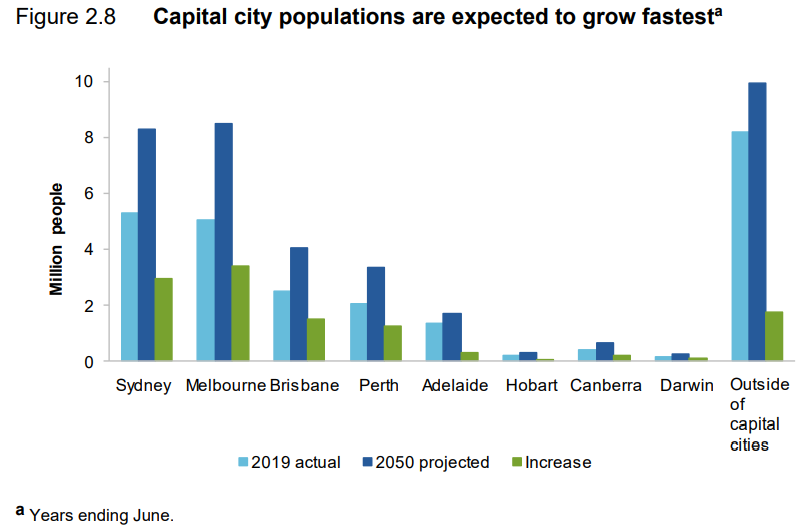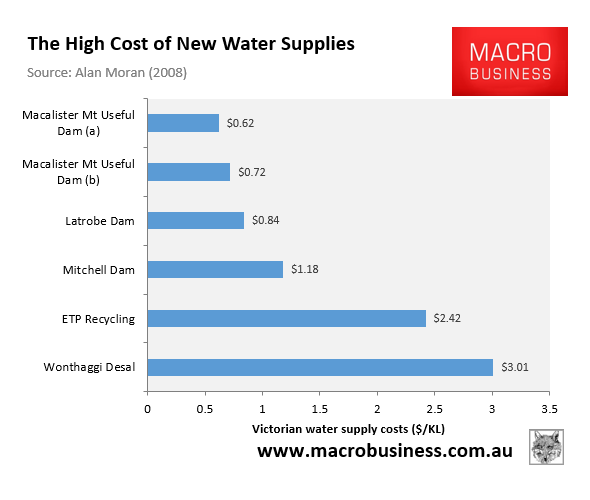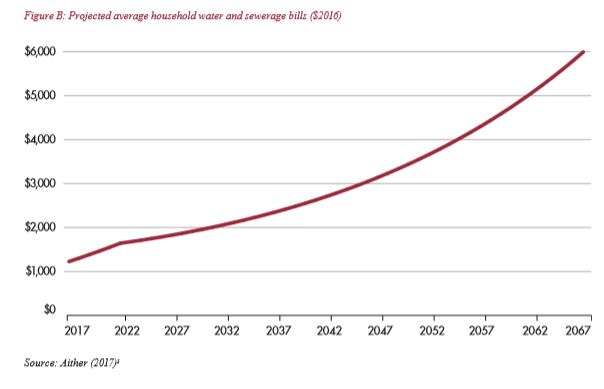Earlier this year, Deloitte’s Weekly economic briefing discussed the pressures on Australia’s water supply as a result of aggressive population expansion (immigration) and climate change.
“As climate change alters our rainfall profile, we risk our water supply becoming scarce and/or expensive”, Deloitte noted.
“This will have implications for agriculture and urban use as well as our aspirations for a clean energy and manufacturing economy”.
“As water availability decreases, pricing will become a key policy tool for efficiently allocating industrial water”, Deloitte argued.

Last week, Deloitte’s Weekly economic briefing argued that Australians will must be compelled to use less water to accommodate the growing population:
“Australians live on the driest inhabited continent, and we also have the second highest average water use per person in the world, at 493 litres a day”.
“But as the impacts of climate intensify and Australia’s population grows, the gap between the supply and demand of water will continue to narrow”.
“To ensure adequate access to fresh water, Australia can increase water supply through developing infrastructure or focus on reducing water demand through behavioural interventions”.
“Increasing water supply is costly and requires a long lead time for infrastructure investment. By contrast, demand-side interventions, such as using behavioural sciences to encourage, or ‘nudge,’ Australians to use less water, can be adopted straight away”.
Here’s an novel idea. If rainfall is expected to diminish owing to climate change, and Australia faces chronic future water shortages, maybe the federal government should reconsider its plan to grow the population so aggressively?
Why are we running a mass immigration policy on the driest continent on earth?
The 2023 Intergenerational Report projects that Australia’s population will swell to 40.5 million by 2062-63, driven by long-term net overseas migration (NOM) of 235,000 a year.

That means the population will grow by a combined Sydney, Melbourne, Brisbane and Adelaide in only 40 years.
The Productivity Commission (PC) in March 2021 warned that the projected 11 million population increase across Australia’s cities by 2050 “present significant risks to the security of Australia’s water resources”.
“Higher anticipated demand from a growing population, alongside reductions in supply, will increase water scarcity and put further pressure on all users (including the environment)”, the PC said.

Source: Productivity Commission (2021)
Only four years ago, Australia was grappling with an extreme drought and water supplies were running low.
What will happen the next time there is a drought and Australia has millions more people to provide water and food to?
To accommodate the extra 14.2 million people, Australia will need to build multiple expensive, energy-guzzling, and environmentally destructive desalination plants. And doing so will drive-up water bills because desalination is far more expensive than traditional sources:

This means that residential and commercial water prices would have to rise to accommodate mass immigration, which will disproportionately affect lower-income households.
Infrastructure Australia projected in 2017 that real household water expenses will more than quadruple due to population increase and climate change, rising from $1,226 in 2017 to $6,000 in 2067:

Water is another example of how the ‘Big Australia’ program of mass immigration ruins working-class living standards, as well as the environment.
The easiest and most cost-effective thing our policy makers can do to safeguard the country’s water supply is to limit immigration to its pre-2005 average level of roughly 100,000 people.
Because the greatest threat to Australia’s water supply is the federal government’s mass immigration ‘Big Australia’ policy.

